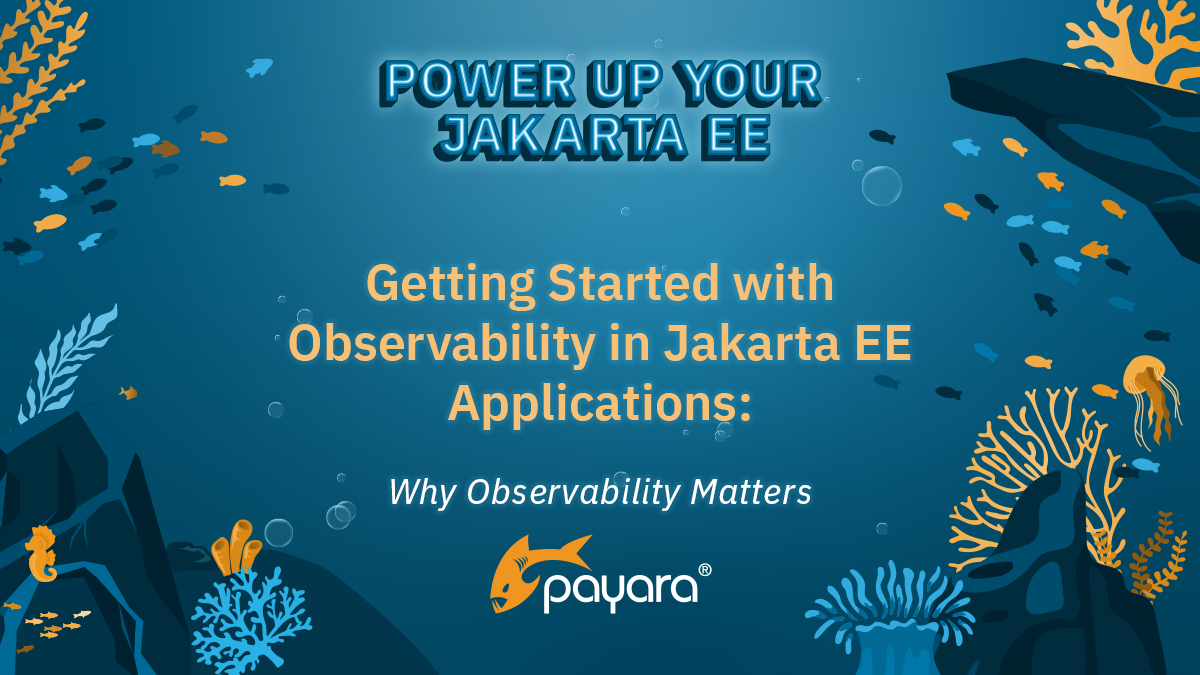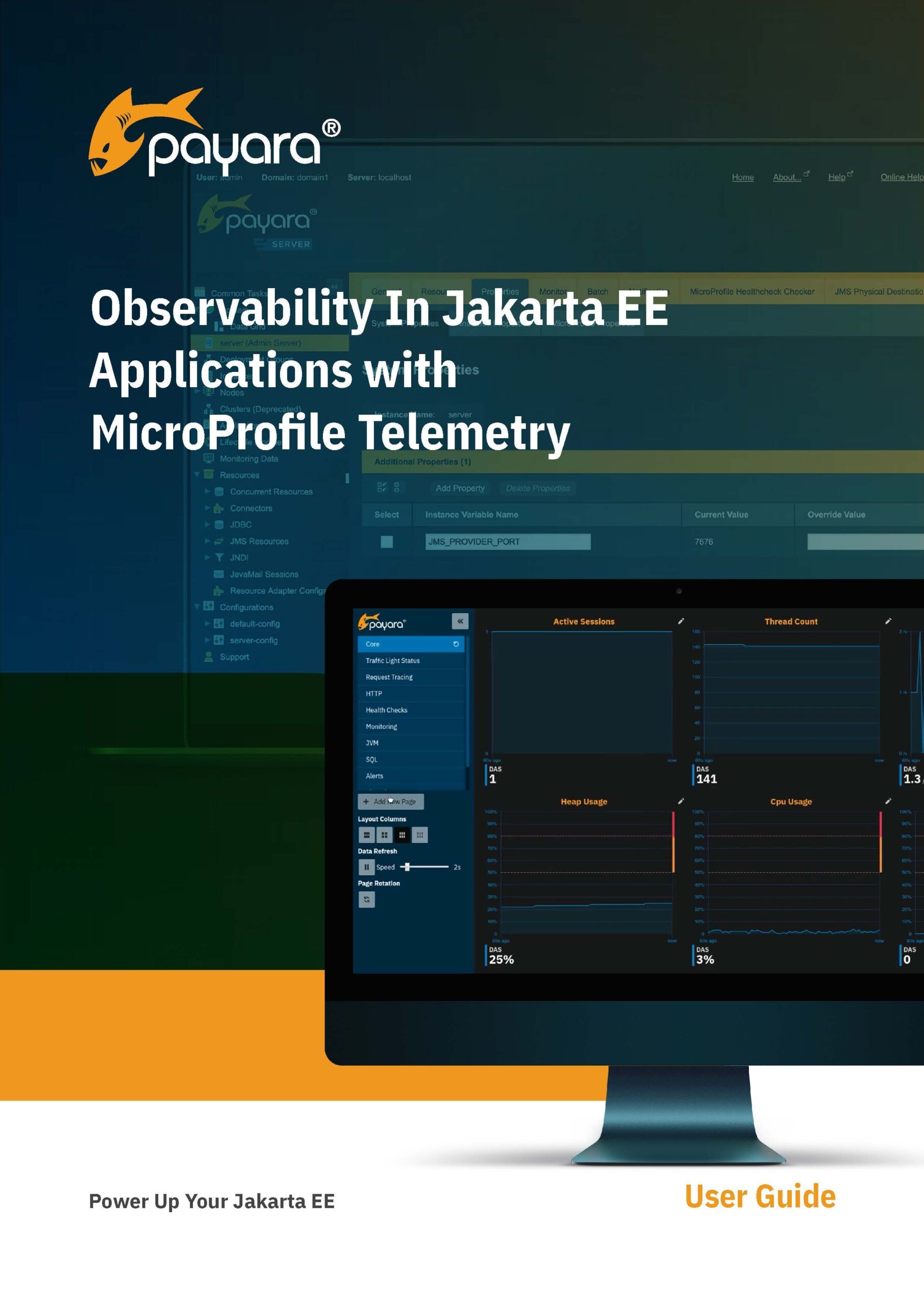 3 minutes
3 minutes
End-of-Life Technology: How to Drive Innovation Without Compromising Stability
When legacy systems approach end-of-life (EOL), enterprise IT teams typically face the choice of moving forward at all costs […]

We all know that businesses rely more and more on applications, and that these tend to be complex programs that often interact with various systems. Even more, as technology evolves, software is expected to become even more advanced and sophisticated in the future. As systems and applications become more complex, robust observability strategies become essential for ensuring operational reliability.
Let’s have a look at what observability is, what it offers and how it can benefit your Jakarta EE applications.
Observability gives software developers, DevOps specialists, engineers and architects the ability to understand a system’s current state based on the data it generates, more precisely its external outputs and, even more specifically, its telemetry. Through this unique insight, software specialists can detect as well as prevent performance issues, unexpected failures and security vulnerabilities.
Clearly, the more observable an application is, the more quickly and accurately teams can identify and resolve the root cause of a specific issue, maximizing applications’ uptime and performance. And there’s more: by leveraging meaningful data to monitor, troubleshoot and debug applications, teams can deliver optimum customer experience and, if applicable, meet service level agreements (SLAs) or other business requirements.
It’s important to note that observability should not be confused with monitoring. While the two concepts are related and often complement one another, they are substantially different. While monitoring collects data on individual components of a system, observability considers the distributed system as a whole. In effect, observability looks at distributed system component interactions and data collected by monitoring activities to find the root cause of issues.
When handling today’s complex and distributed systems, identifying a the root case behind an issue can be extremely challenging. An observability solution can support visibility, transparency and availability while fostering a proactive approach to performance issues and enabling a more unified workflow. In addition, it can make it applications easier to repair and update, optimizing the mean time to detect (MTTD) and mean time to repair (MTTR). More specifically, the MTTR of companies using observability practices is typically within minutes or just a few hours, compared to days, weeks or even months for any other organization.
In particular, with microservices being the most common architecture, there isn’t a discrete application owner, as it was often the case for monolithic solutions. Nowadays, many teams need to be involved, and responsibilities are necessarily shared. Observability help teams understand, analyze, troubleshoot and improve areas of applications that they may not own. This is especially true for teams relying on Platform Engineering, whereby a single group enables observability for all involved teams.
When it comes to end users, observability can support the delivery of a quality service as well as user experience. Even more, as developers can leverage telemetry data, they can use the resulting insights to better understand user behavior and deliver a valuable and effective platform.
Observability bring numerous benefits to software development teams and entire organizations, with the advantages discussed above being able to drive key efficiencies, including optimized use of time and resources as well as cost saving. In addition, by implementing observability practices, companies can stay competitive, demonstrate operational integrity and meet regulatory standards.
When it comes to enterprise applications, which operate as part of large, distributed systems with numerous interconnected components, mastering observability and telemetry in Jakarta EE is essential, as such software typically rely on enterprise Java. Just like with any other system or application, by offering a comprehensive understanding of your Jakarta EE framework’s internal state, observability makes it easier to proactively detect and fix issues quickly.
 For such applications, two major approaches
For such applications, two major approaches
emerged as primary options: OpenTelemetry and MicroProfile Telemetry. While the first offers broader ecosystem compatibility, MicroProfile Telemetry provides a more integrated experience for Jakarta EE developers.
Ready to take control of your Jakarta EE application’s performance and reliability? Download our latest guide “Observability In Jakarta EE Applications with MicroProfile Telemetry” to elevate the observability of your system!
Share:
 3 minutes
3 minutes
When legacy systems approach end-of-life (EOL), enterprise IT teams typically face the choice of moving forward at all costs […]
 5 minutes
5 minutes
November has been one of the busiest months of the year for the Java and Jakarta EE ecosystem. With […]
 3 minutes
3 minutes
Working with enterprise Java databases can sometimes feel like swimming upstream. Jakarta EE 11’s Jakarta Data helps developers glide […]